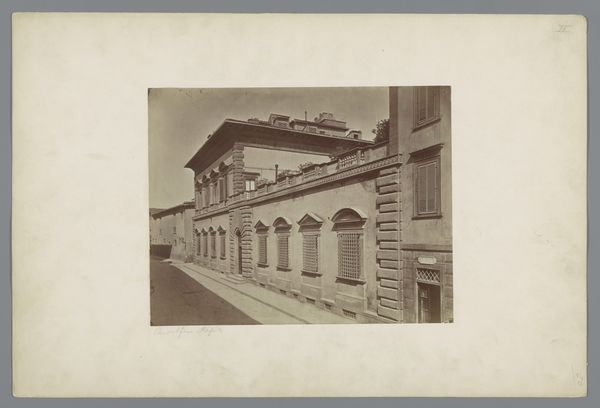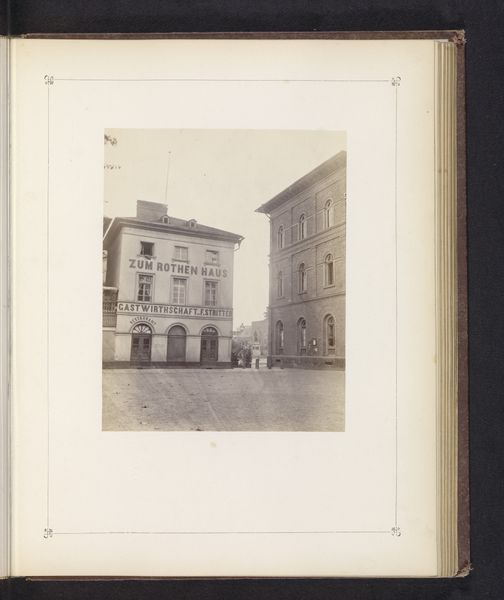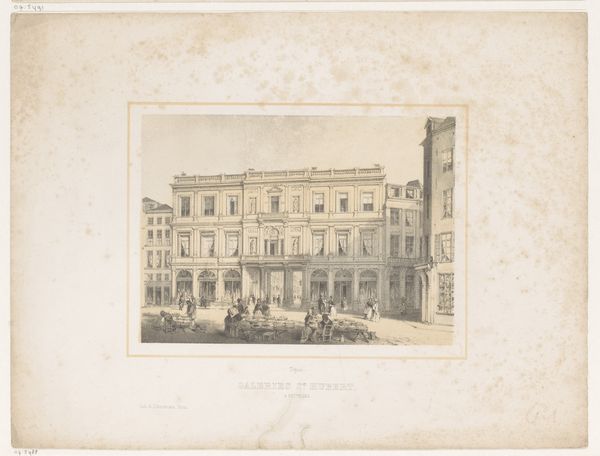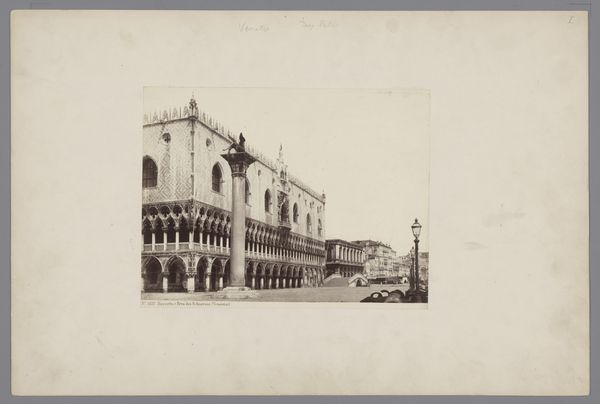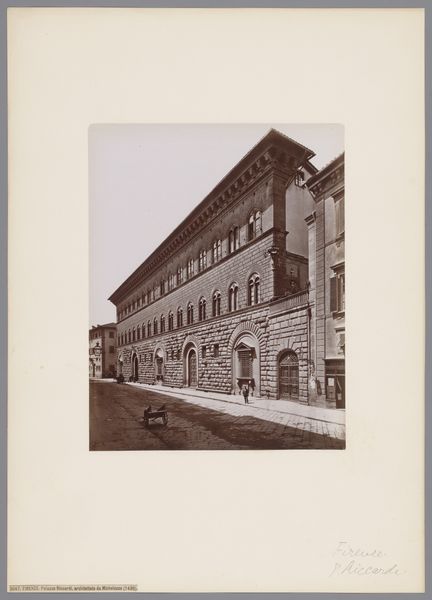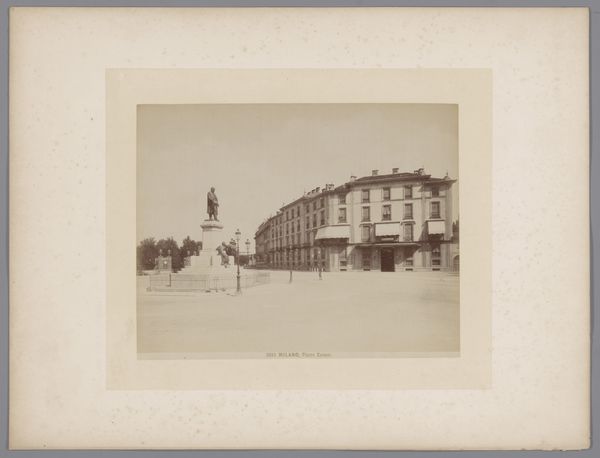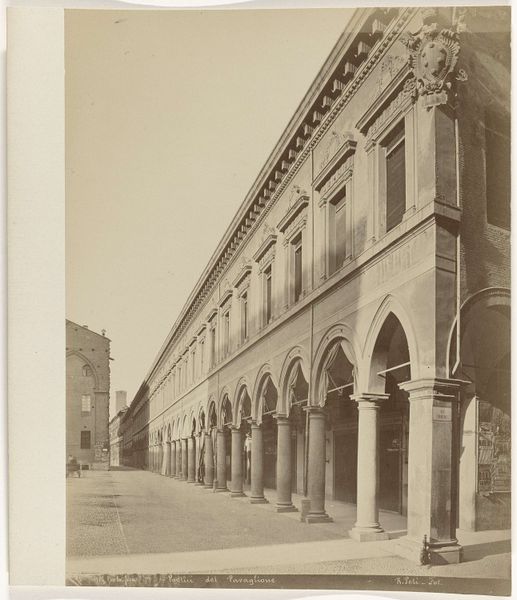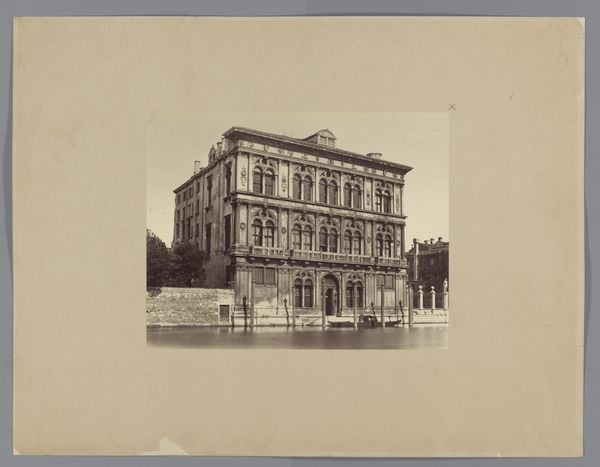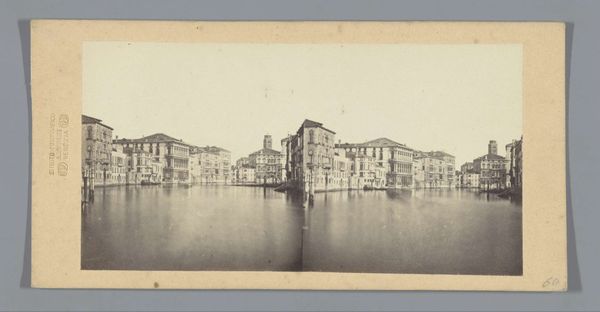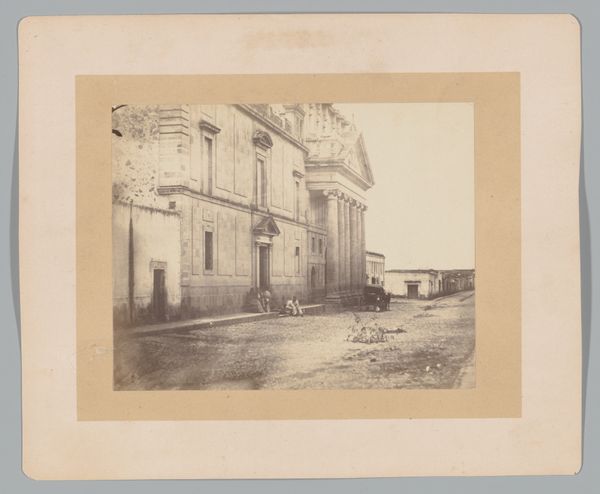
#
photo of handprinted image
#
aged paper
#
homemade paper
#
pale palette
#
pastel soft colours
#
muted colour palette
#
photo restoration
#
light coloured
#
white palette
#
soft colour palette
Dimensions: height 190 mm, width 253 mm, height 349 mm, width 470 mm
Copyright: Rijks Museum: Open Domain
Curator: It's sepia-toned stillness. Like stepping into a half-forgotten dream, or a daguerreotype breathing faintly. Editor: Indeed, there’s a poignant air to it. This hand-printed photograph, taken by Giacomo Brogi sometime between 1860 and 1890, depicts the Grand Hotel de New-York in Florence, Italy. What's striking to me is how this luxury hotel, catering to wealthy elites, becomes almost spectral through Brogi's lens. Curator: Spectral is perfect! The hotel almost levitates on the quiet street. And that "Grand Hotel de New-York" name, painted above the door—like a little lost piece of America washed ashore. It speaks volumes about the desires of the wealthy. The world at their fingertips, even then. Editor: Exactly. It reflects a desire for familiarity and perhaps even cultural dominance, even while in a foreign space. The gaze of the colonizer travels, manifested in architectural mimicry. One imagines that Brogi, who catered to these tourists, might have felt ambivalent toward such desires and trends. What also jumps out is the flatness of the scene, how little depth it has, compared to a more contemporary picture. Curator: Right. The scene is stately, but still somber in its affect. The muted palette—it almost sucks the color from the day. It’s an empty-feeling place, that evokes so many conflicting narratives that reflect travel and class at that moment in history. I feel a touch of melancholy. Did that many people truly smile? Or were their corsets too tight and their pockets too heavy? Editor: Or the promise of “New York” always already haunted by something? You know, something unattainable? Because the material conditions of Florence aren't going to magically turn into Gilded Age Manhattan. Curator: It's that “always already haunted” bit that does it, right? Because if you look, really look, there are people lingering on that walkway. Maybe they were haunted then too, just like we are now, only without knowing where the ghost story would go. Editor: And how often are such histories of labor and exploitation erased for the sake of the pretty picture? Perhaps our job now is to bear witness to that silence, and to turn up the volume on marginalized voices.
Comments
No comments
Be the first to comment and join the conversation on the ultimate creative platform.
